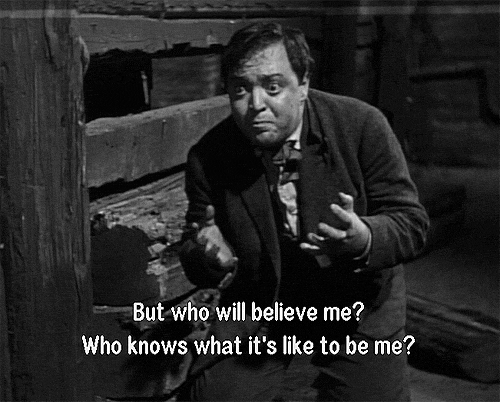SYMPATHY FOR THE DEVIL: The Rhetoric of Compassion
(GLITS 314, GERMAN 385, C LIT 357, PHIL 301, CHID 270)

Prof. Ellwood Wiggins, wiggins1@uw.edu (Office Hours: schedule appt here)
TA Inga Schwemin, schwemin@uw.edu (Office Hours: MW 1:30-2:30, DEN 400K)
President Obama called the “empathy deficit” the most pressing problem facing America. In this course, we will examine what’s at stake in becoming a more empathetic nation.
Is compassion the foundation of human morality or a dangerously unreliable emotion? This course examines the strategies and motivations in different media of fostering sympathy for commonly held enemies or discriminated groups. The syllabus runs from Ancient Greece to depictions of Nazis and terrorists in modern film, and considers philosophical assessments of sympathy alongside examples of its aesthetic manufacture. Half of our readings are in moral philosophy (e.g., Aristotle, Spinoza, Rousseau, Adam Smith, Kant, Nietzsche, Arendt), and in each case we use the literary text or film (e.g., Sophocles, Shakespeare, Lessing, Eliot, Brecht) as a kind of experimental field to evaluate the philosophers’ concepts and claims about the moral efficacy of compassion.
This course engages in team-based learning. Groups work to engender sympathy for a 'bad guy' in three genres: a speech, a scene, and a visual project. During the final, groups will present their project to the class.
This course will count toward Diversity Credit, and (depending on which section) A&H or SSc.
Cross-listed with: GLITS, Comparative Literature, CHID, Philosophy, German.
By the end of this course, you will be able to:
- Define pity, sympathy, compassion, and empathy in current usage and historically
- Describe and critique the role of sympathy in various systems of moral philosophy
- Analyze films and literary works as a way of exploring specific questions about sympathy
- Describe the important features of four different modes of creative production in terms of engendering sympathy: rhetoric; drama; narrative; and film
- Create and analyze your own creative examples of sympathetic portrayals in four modes: rhetorical, dramatic, narrative, and visual